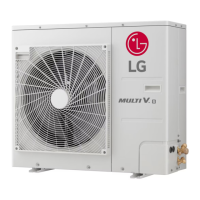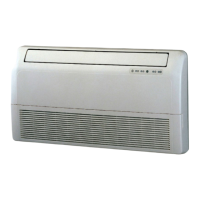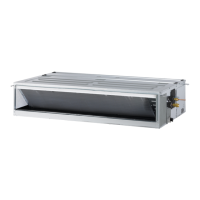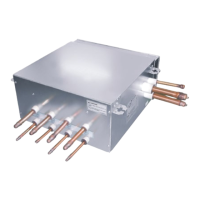18
MULTI V S System Installation Manual
Due to our policy of continuous product innovation, some specifications may change without notification.
©LG Electronics U.S.A., Inc., Englewood Cliffs, NJ. All rights reserved. “LG” is a registered trademark of LG Corp.
Piping Materials and Handling
Pipes used for the refrigerant piping system must include the specified thickness, and the
interior must be clean.
While handling and storing, do not bend or damage the pipes, and take care not to contami-
nate the interior with dust, moisture, etc. See Table 9 for care of piping.
'U\ Clean Airtight
Principles No moisture should be inside the piping. No dust should be inside the piping. No leaks should occur.
Problems
Caused
- Significant hydrolysis of refrigerant oil.
- Refrigerant oil degradation.
- Poor insulation of the compressor.
- System does not operate properly.
- EEVs, capillary tubes are clogged.
- Refrigerant oil degradation.
- Poor insulation of the compressor.
- System does not operate properly.
- EEVs and capillary tubes become
clogged.
- Refrigerant gas leaks / shortages.
- Refrigerant oil degradation.
- Poor insulation of the compressor.
- System does not operate properly.
Solutions
- Remove moisture from the piping.
- Piping ends should remain capped until
connections are complete.
-
Do not install piping on a rainy day.
&RQQHFWSLSLQJSURSHUO\DWWKHXQLW¶VVLGH
- Remove caps only after the piping is
cut, the burrs are removed, and after
passing the piping through the walls.
- Evacuate system to a minimum of 500
microns and ensure the vacuum holds at
that level for 24 hours
- Remove dust from the piping.
- Piping ends should remain capped until
connections are complete.
- Connect piping properly at the side of
the unit.
- Remove caps only after the piping is cut
and burrs are removed.
- Retain the cap on the piping when
passing it through walls, etc.
- Test system for air tightness.
- Perform brazing procedures that comply
with all applicable standards.
- Perform flaring procedures that comply
with all applicable standards.
- Perform flanging procedures that
comply with all applicable standards.
- Ensure that refrigerant lines are pressure
tested to 550 psig.
Moisture
Dust
Leaks
Table 9: Three Principles of Refrigerant Piping.
Figure 21: Keep Piping Capped While Storing.
2'LQ 1/4 3/8 1/2 5/8 3/4 7/8 1-1/8 1-3/8 1-5/8
Material
Rigid or Soft ACR
Rated for R410A
Rigid or Solid ACR Rated for R410A
Min. Bend
5DGLXVLQ
.563 .9375 1.5 2.25 3.0 3.0 3.5 4.0 4.5
Min. Wall
7KLFNQHVVLQ
.031 .031 .031 .039 .042 .045 .050 .050 .05
Table 7: $&55DWHG&RSSHU7XELQJ0DWHULDO
Type
Seamless Phosphorous
Deoxidized
Class UNS C12200 DHP
Straight
Lengths
H58 Temper
Coils O60 Temper
Table 8: ACR Rated Piping Tube Thicknesses.
Selecting Field-Supplied Copper Tubing
7\SH$&5FRSSHULVWKHRQO\DSSURYHGUHIULJHUDQWSLSHPDWHULDOIRUXVHZLWK/*0XOWL96DLUFRQGLWLRQLQJSURGXFWV$&5UDWHGWXELQJLVWKH
RQO\W\SHWKDWVKLSVZLWK\HOORZFDSV$SSURYHGWXELQJIRUXVHZLWK0XOWL9SURGXFWVZLOOEHPDUNHG³55$7('´DORQJWKHOHQJWKRIWKH
tube.
• 'UDZQWHPSHUULJLG$&5FRSSHUWXELQJLVDYDLODEOHLQVL]HVWKURXJKLQFKHV$670%FOHDQGU\DQGFDSSHG
• $QQHDOHGWHPSHUVRIW$&5FRSSHUWXELQJLVDYDLODEOHLQVL]HVWKURXJKLQFKHV$670%FOHDQGU\DQGFDSSHG
Tube wall thickness should meet local code requirements and be approved for an operating pressure of 551 psi. If local code does not
VSHFLI\ZDOOWKLFNQHVV/*VXJJHVWVXVLQJWXEHWKLFNQHVVSHUWDEOHEHORZ:KHQEHQGLQJWXELQJWU\WRNHHSWKHQXPEHURIEHQGVWRDPLQLPXPDQG
use the largest radii possible to reduce the equivalent length of installed pipe; also, bending radii greater than ten (10) pipe diameters can minimize
pressure drop. Be sure no traps or sags are present when rolling out soft copper tubing coils.
Piping Preparation
GENERAL INSTALLATION GUIDELINES
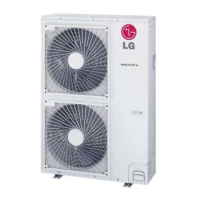
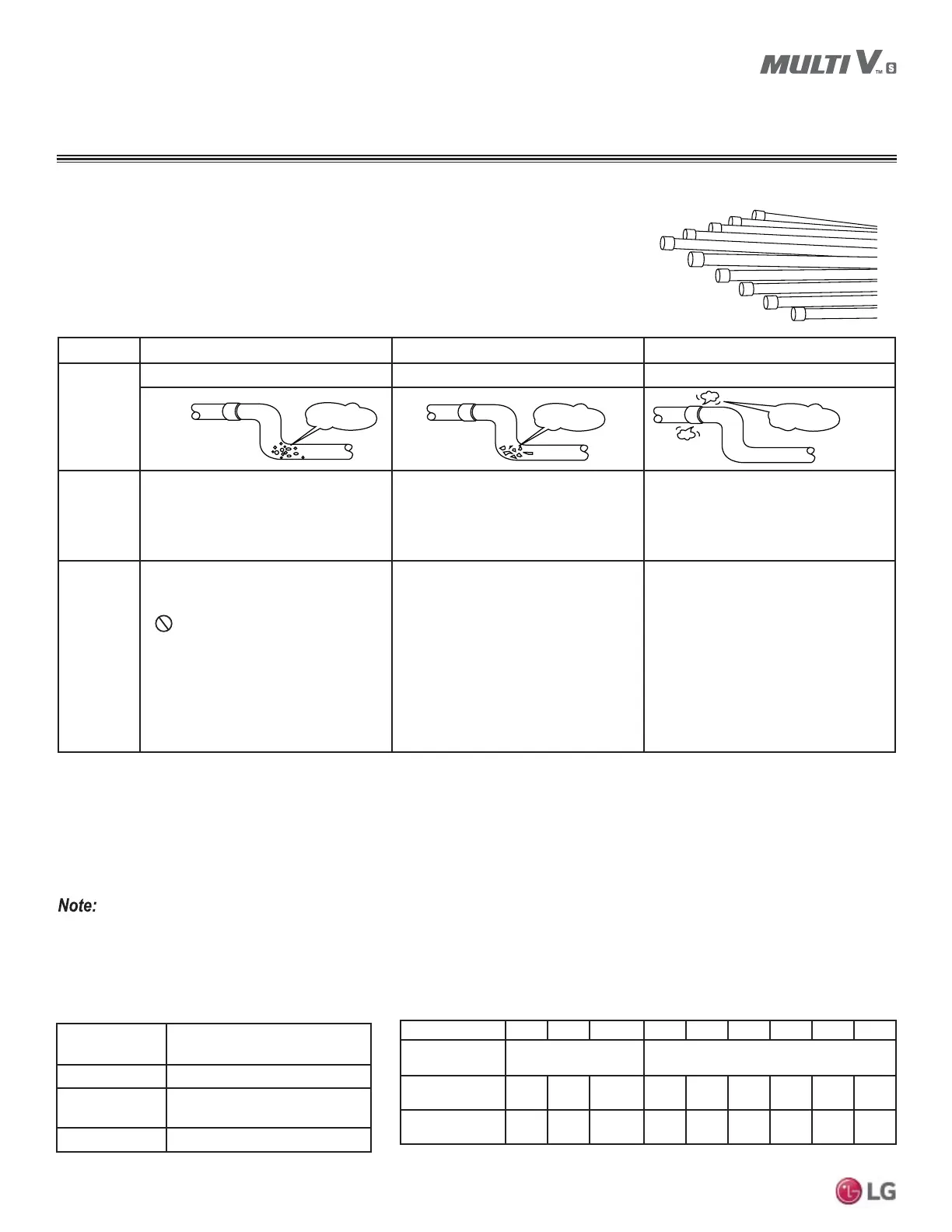